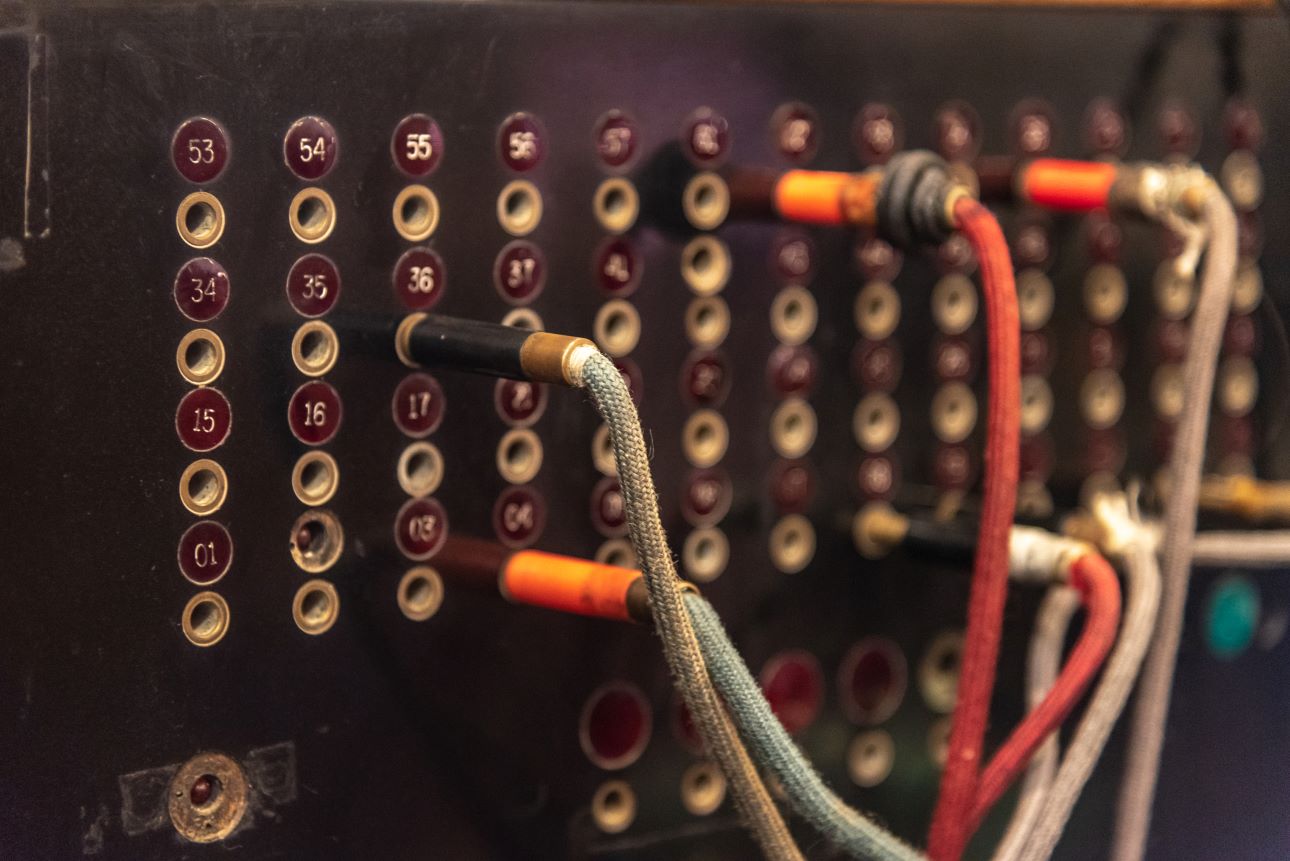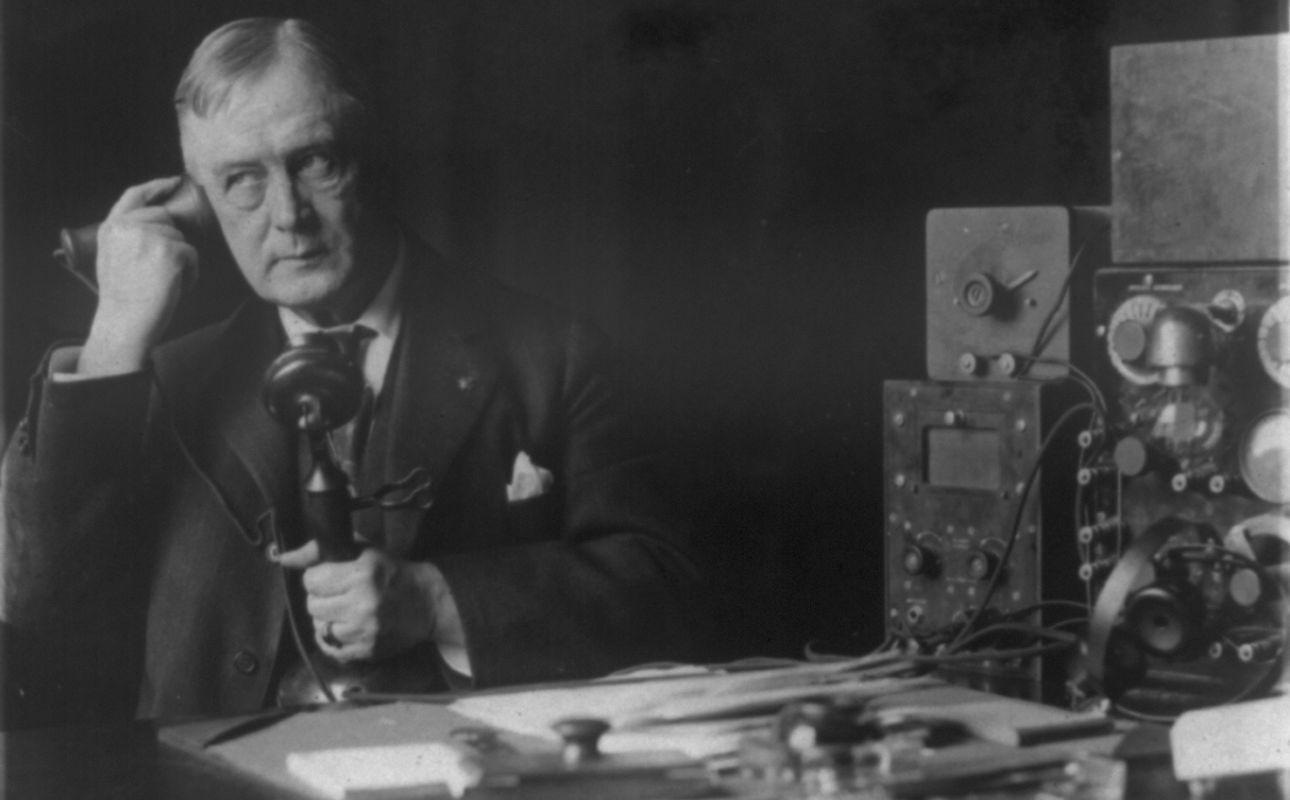Telegraphs, phones and mobile devices: a telecommunications timeline
Key Points
•Telecommunications from the prehistoric era to now.
•The inventions that changed the way we communicate.

The development of telecommunications has had a tremendous impact on human history, allowing people to communicate over long distances using technology. Significant inventions in the history of telecommunications include the telegraph, telephone, television and the internet. Telecommunications allows people to quickly share urgent information that can save lives, engage in commerce across geopolitical borders, and learn more about how others live all over the world. Over the years, technological advances have made communication more efficient, affordable and accessible, shaping how human society functions and how individuals live their everyday lives.
Prehistoric Period: Before written communication, people had limited options for sharing information farther than shouting distance. If they needed to alert others about a potential threat or help them find a location, they could use fire to create beacons or smoke signals, or they could use loud sounds made with horns or drums.
14th Century B.C.E.: If you had the money to hire a messenger, you could have them deliver a message to someone in a neighboring city for you. This earliest form of mail was reserved for nobility at first, but over time the cost became more reasonable, opening it up to more people.
• Letters in the Ancient World
1350 B.C.E.: People used homing pigeons to send messages. The bird would be transported to one location and a written message would be strapped to its leg, and then the bird would be released to find its way back home and deliver the message.
4th Century B.C.E.: Semaphore, or visual signaling, was used to send messages between two towers or hills. The Greeks invented a water-based hydraulic telegraph system of communication using semaphore. It used two identical devices, one on each hill, both of which contained a vertical rod surrounded by water. The rod was marked with different messages. To send a message, one person would use a signal fire to coordinate with the other person so that they opened the spigots at the bottom of their devices at the same time, letting out the water. Then, the sender would signal when the other person should close their spigot. The receiver could then look at the water level and see which message was being sent.
• The Hydraulic Telegraph of Aeneas
1672: English scientist Robert Hooke invented the first acoustic telephone, which could be used to transmit sounds through a string between two cylinders.
• The Science Behind String Telephones
18th Century C.E.: Claude Chappe developed a semaphore system in 1794 during the French Revolution to send information across a series of French towers between Paris and Lille. Wooden posts atop the towers could be spun to create different letters and symbols. Semaphore eventually became a common way to communicate with two flags or colored paddles between boats at sea or from a boat to the shore.
• Semaphore Flag Communication
• High-Speed Communications in 18th-Century France
1838: American inventor Samuel Morse introduced the electrical telegraph, which could be used to send a coded message through a wire with electrical pulses. He also invented Morse code, a system of dashes and dots that stand for letters and numbers.
• Samuel Morse Unveils the Telegraph
1858: The first transatlantic telegraph cable was laid between Newfoundland, Canada, and Ireland.
• How Perseverance Laid the First Transatlantic Telegraph Cable
1867: Signal lamps were used to flash coded messages between two points, an idea pioneered by Royal Navy Capt. Philip Colomb.
1876: Alexander Graham Bell invented the telephone, which could be used to send the sound of someone’s voice through an electrical wire.
• The Story Behind the Telephone
1877: Thomas Edison invented the tin foil phonograph, a device that could be used to play back recorded telephone messages.
1880: Bell created the photophone, a forerunner of fiber-optic technology that could transmit sound using a beam of light.
1893: Nikola Tesla invented the first wireless telegraphy system, which could send messages using radio waves rather than wires.
1896: Guglielmo Marconi, building on Tesla’s work, patented a device for long-distance radio communication. Though a few different inventors were involved in the birth of radio, Marconi would get most of the credit, even winning the Nobel Prize in physics.
1914: The first transcontinental telephone system was completed, giving people the ability to speak with each other from coast to coast.
• Transcontinental Telephone Line
1927: The first transatlantic wireless telephone service began with a call from New York to London.
• The First Transatlantic Phone Call
1927: Philo T. Farnsworth patented the first electronic television system, giving people the ability to transmit images using radio waves.
• Philo T. Farnsworth and the Invention of Television
1930: Bell Labs invented the first two-way videophone, the Iconophone.
• Look Who’s Talking: The Birth of the Videophone
1934: Wireless telephone service was extendedfrom the U.S. across the Pacific Ocean to Japan.
1936: Germany installed public videophones in private booths located in the Berlin and Leipzig post offices. It eventually expanded with videophone booths in the Nuremberg and Munich post offices and the network operated until 1940, when the Nazis shut it down.
• A Missing Link in the History of the Videophone
1946: Southwestern Bell installed phone equipment in a car, creating the first mobile phone.
• The First Mobile Phone Call Was Made 75 Years Ago
1956: A telephone cable laid across the Atlantic Ocean went live to make transatlantic communication cost effective and more reliable.
• BT Chiefs Recall Transatlantic Success
1962: NASA launched the first active communications satellite, called Telstar 1, which was developed in cooperation with Bell Telephone Laboratories for AT&T.
• Five Fast Facts About Telstar
1966: Chinese physicist Charles Kao and British engineer George Hockham collaborated on research guiding the development of fiber-optic telecommunications, theorizing that glass fibers without impurities could minimize the loss of transmitted light.
• Illuminating Information-Sharing
1969: ARPANET, the first computer network, was started.
• ARPANET
1973: Motorola employee Martin Cooper placed the first call using a handheld cellphone.
1976: The International Maritime Satellite Organization, or INMARSAT, was founded. This organization created a satellite communication system for ships, allowing them to get information about changes in the weather or call for help more quickly.
• Convention on the International Maritime Satellite Organization
1979: Nippon Telephone and Telegraph in Tokyo, Japan, introduced the first-generation cellular phone network.
• Wireless Technology From 0G to 5G
1982: Jonathan Postel invented the Simple Mail Transfer Protocol, or SMTP, which allowed for email to be sent between networks.
• Simple Mail Transfer Protocol
1983: The internet was created.
1992: The first SMS is sent when 22-year-old engineer sent “Merry Christmas” to his colleague via the Vodafone network.
• 32 years since the world’s first text message.
1995: Mass-marketed VoIP (Voice over Internet Protocol) software was released, bringing this technology into common use.
1998: The first handheld satellite phones were introduced.
• Satellite Phones: Lost in Space
Additional reading on the history of telecommunications
• The Telecommunications Industry: A Research Guide: The Library of Congress put together this resource that draws on the institution’s vast collection.
• Turning Points in Telecommunications History: Many important people and events have pushed the field of telecommunications forward, helping people to communicate more easily.
• The World’s First Smartphone: IBM is often credited with inventing the smartphone, but their creation, the Simon, failed to catch on.
• The History of Voicemail: Gordon Matthews is credited with inventing voicemail in the 1970s, but this technology was too expensive for consumers for many years.



